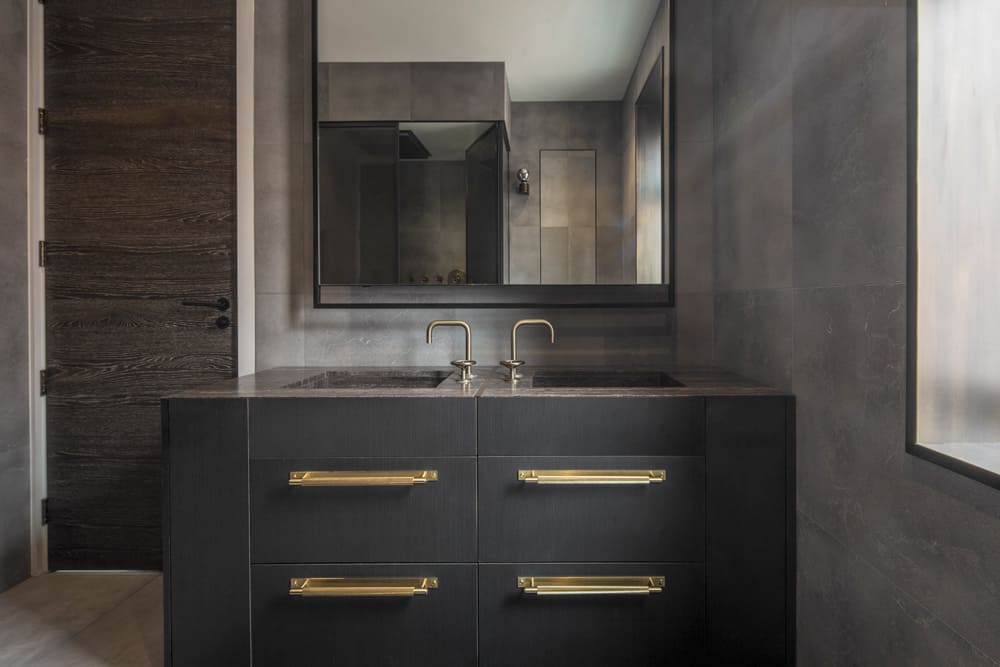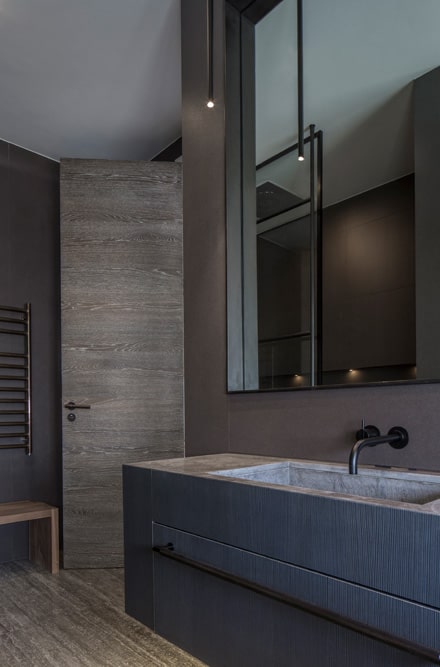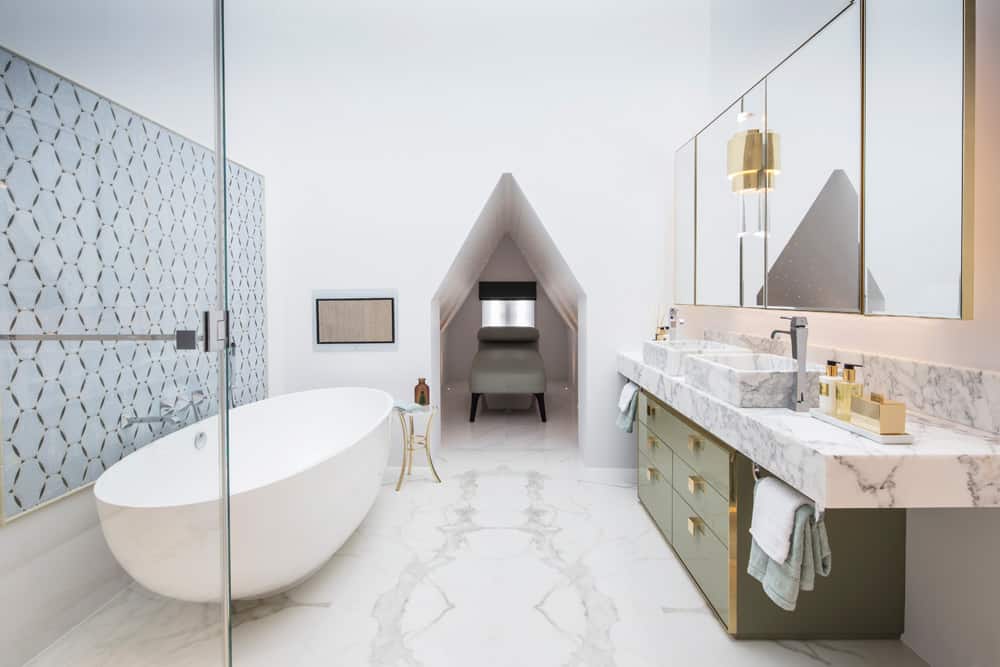Texture and natural materials are big news this season, and how better to introduce them into your luxury interior design than with stone floors, worktops and splashbacks? We’ve seen a massive rise recently in the popularity of more unusual natural stone finishes such a granite, marble and quartz. Stone is a highly durable material which comes in a vast array of finishes, so it’s the perfect choice for introducing colour and character into your home.
Stone is often the perfect choice for our discerning clients because it is guaranteed to bring drama, glamour and luxury to a kitchen or bathroom. It won’t go out of fashion because it’s such a timeless material, and – if well maintained – stone can last a lifetime making it well worth the investment.
Choosing the right stone for your home can, however, be a bit of a minefield. So here’s our guide to some of the types of stone we like to use in our interior design projects, plus our advice on which kinds are best suited to particular areas of the home.
Limestone
Limestone is a great choice for flooring because it is naturally non-slip if left unpolished. It also has great texture and variation, bringing a wonderfully tactile quality to a room. However, because it’s porous it will need sealing before use to ensure resistance to water and stains.


For our Antrim Grove project, our clients wanted a contemporary, industrial look for their master bathroom. The focus was on rich textures and sophisticated finishes and we relished the opportunity to bring warmth and cosiness to what could be a hard, neutral space. For the master bathroom, we chose Amaya limestone with a velvet finish for the walls, and silver honed travertine for the flooring and for the vanity counter top and basin.


The guest bathroom features silver honed travertine flooring and a bespoke basin made from Pietra d’Avola, a rich, chocolatey limestone. Our clients were so happy with the end result. It was exactly the kind of timeless, industrial-luxe style they wanted to achieve.
Granite
Granite is known for being exceptionally hard and solid, and with good reason. This ancient stone is formed from the crystallisation of magma below the earth’s surface over millions of years, and as such it is incredibly durable making it both heat and scratch resistant. It’s also naturally cool, making it the perfect material for food preparation surfaces in the kitchen.
Granite worktops have a timeless appeal, but we’ve noticed a recent trend towards adding extra luxury in the form of crystal-infused granite finishes. These surfaces sparkle in the light, adding a real sense of drama – particularly when backlit. It’s worth noting that although it’s water resistant, granite is porous which means it requires sealing as well as ongoing maintenance with a specialist pH-neutral cleaner.
Marble
Marble’s beauty and elegance have long been associated with high end luxury, but keep in mind that marble can be prone to scratching, burn marks and stains. The reason it requires a bit more care than other stones is because it’s softer and more porous. But if you really love the look of it, we think it’s absolutely worth the extra care required!
We’re seeing a move towards the use of strong-veined marbles at the moment which can achieve incredibly dramatic results. Book-matching is also becoming more popular. This is when two pieces of veined marble cut from the same slab are positioned in a mirrored arrangement to allow alignment of the veining, which gives a wonderfully dramatic result.
In the case of our Bromptons project, the owners wanted a luxurious spa feel for their master bathroom so we chose marble because of its strong association with elegance and luxury. The Arabescato Corchia marble we used for the vanity unit has unique veining that adds depth to the scheme, while the paler veined Calacatta marble on the floor is perfect for achieving a symmetrical book-matched pattern. This bathroom is now the epitome of chic and is exquisitely equipped for pampering.
Quartz
Quartz is one of nature’s toughest stones and can generally withstand the demands of even the most well-used family bathroom. More and more of our clients are turning to quartz for its practical qualities as well as for its beautiful aesthetic. It’s also highly versatile and can be used for anything from wall cladding and bath surrounds to splashbacks and flooring.
Quartz is highly durable, waterproof, easy to clean and doesn’t need sealing, treating or polishing. It’s also resistant to stains, scratches, mould and mildew, making it the perfect choice for bathrooms and shower rooms.
Composite
Engineered stone, also known as composite, is a material formed when chips of natural stone are combined with a polymer resin. The result is a non-porous, durable surface which is also heat, stain and scratch resistant. It can be made in a huge variety of colours and textures which is why composite is one of our favourite materials to use for kitchen worktops. It has the ability to look either classic or contemporary depending on the desired effect.
Composite also comes in large slabs to minimise joins, and you can achieve seamless alignment of veining because it’s a man-made product. You can also create beautifully slick, mitred edges for a really clean look.
For our Fitzrovia project, the client wanted his London pied-à-terre to reflect his vibrant personality with bold colours, textures and some serious wow factor. So we chose a stunning marble-effect composite for the kitchen island and splashbacks in a gorgeous aubergine colour. As well as being beautiful, the surface is extremely hard-wearing which was perfect for this client who loves to entertain.
3 Top tips for selecting stone for your home
1) Do your research
Different types of stone vary enormously in terms of their qualities and maintenance requirements. Make sure you do your research to ensure the stone you end up with is suitable for your needs in terms of functionality, lifestyle and aesthetic.
2) Try before you buy
Always get hold of a sample of your chosen stone before you buy. Quality, colour and texture can vary greatly. Also, it’s a good idea to try to take a look at your sample in the space in which it’s intended for. The light in your bathroom, for example, will be very different from the showroom environment.
3) Seek expert advice
Keep asking questions throughout the selection process. Don’t assume that, just because the manufacturer tells you so, a particular stone will perform in a particular way. One of the reasons our clients come to us is that they trust us to recommend products with exceptional performance capabilities. As experts, we know which products will perform well in a particular environment and which brands our clients can trust.
Photography by Richard Waite
